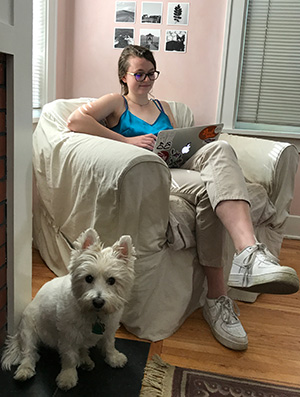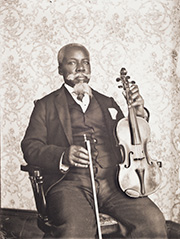Halle Smith

The incredible importance of the research we did as a class on William Bullard's collection of photographs throughout the semester is even more apparent to me now that I have finished my part of the work. Throughout the entire process, I found myself struggling the most with how to navigate piecing together the lives of the Johnsons, a family of color, as a white person. I didn't want to sound condescending or patronizing or portray their lives in a way that wouldn't truly represent the spaces they held in Worcester, which I hope I was successful in avoiding within my written work. As a geography major with very minimal historical research experience, I found this project incredibly difficult. In complete honesty, I asked myself several times throughout the semester why I was participating in the class, because I feared that my research wouldn't do the Johnson family or their portrait justice. It's one thing to simply recount the stories of the people who sat for William Bullard, but assimilating their histories into the greater American narrative where they were so repeatedly excluded is something entirely greater, and proved to be another challenge that I didn't anticipate. I cannot speak enough to how incredible this experience was, however. Despite all of the difficulties, doubt, and uncertainty, my research taught me more about Worcester and its people than I would have ever known otherwise and I will always be thankful for that. I love thinking about the Johnsons and speculating about how their daily lives might've looked in Worcester at the turn of the 19th century. I only wish that I could go back in time to their home in the Beaverbrook neighborhood to meet them and tell them that their story was going to be hung on a wall in the Worcester Art Museum come the fall of 2017, and that their histories are still very much alive and active in Worcester.


 Sign up for WAM eNews
Sign up for WAM eNews